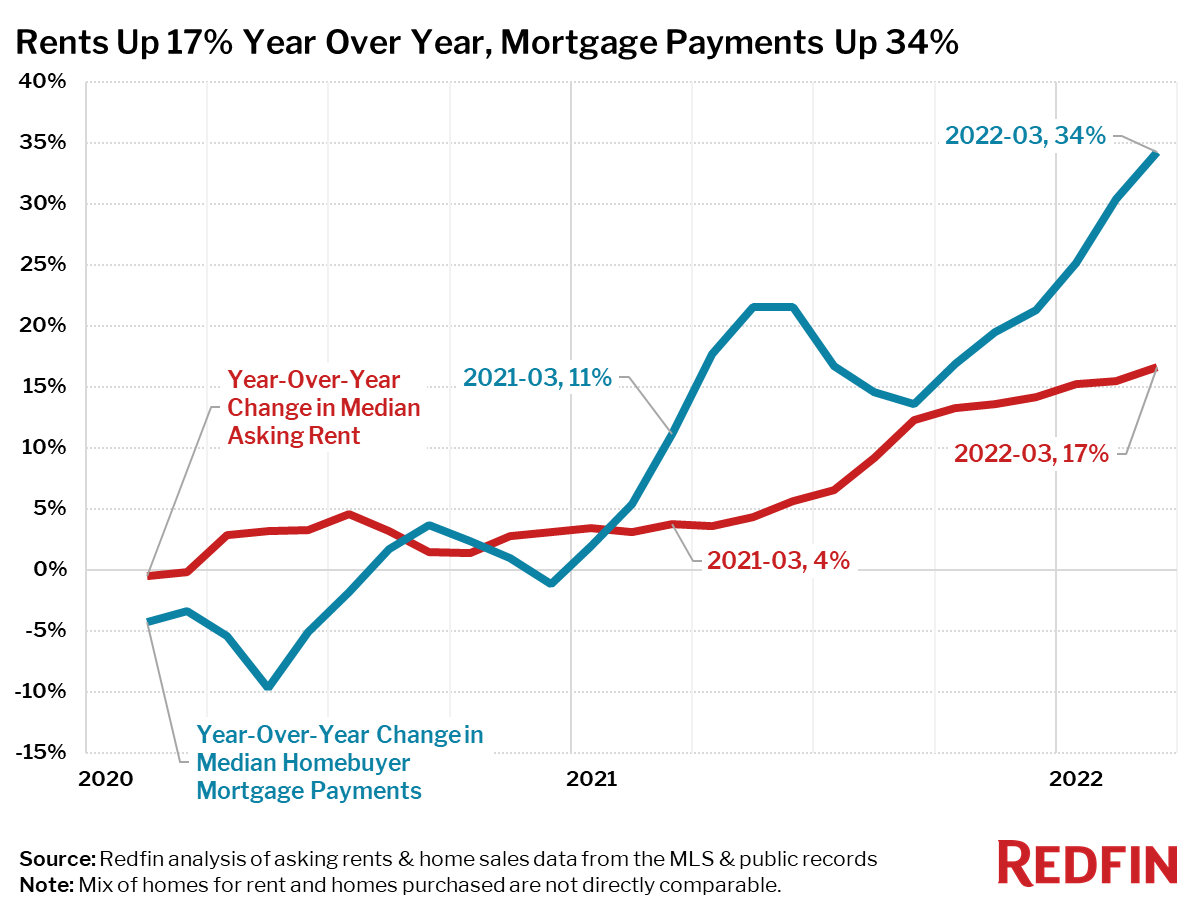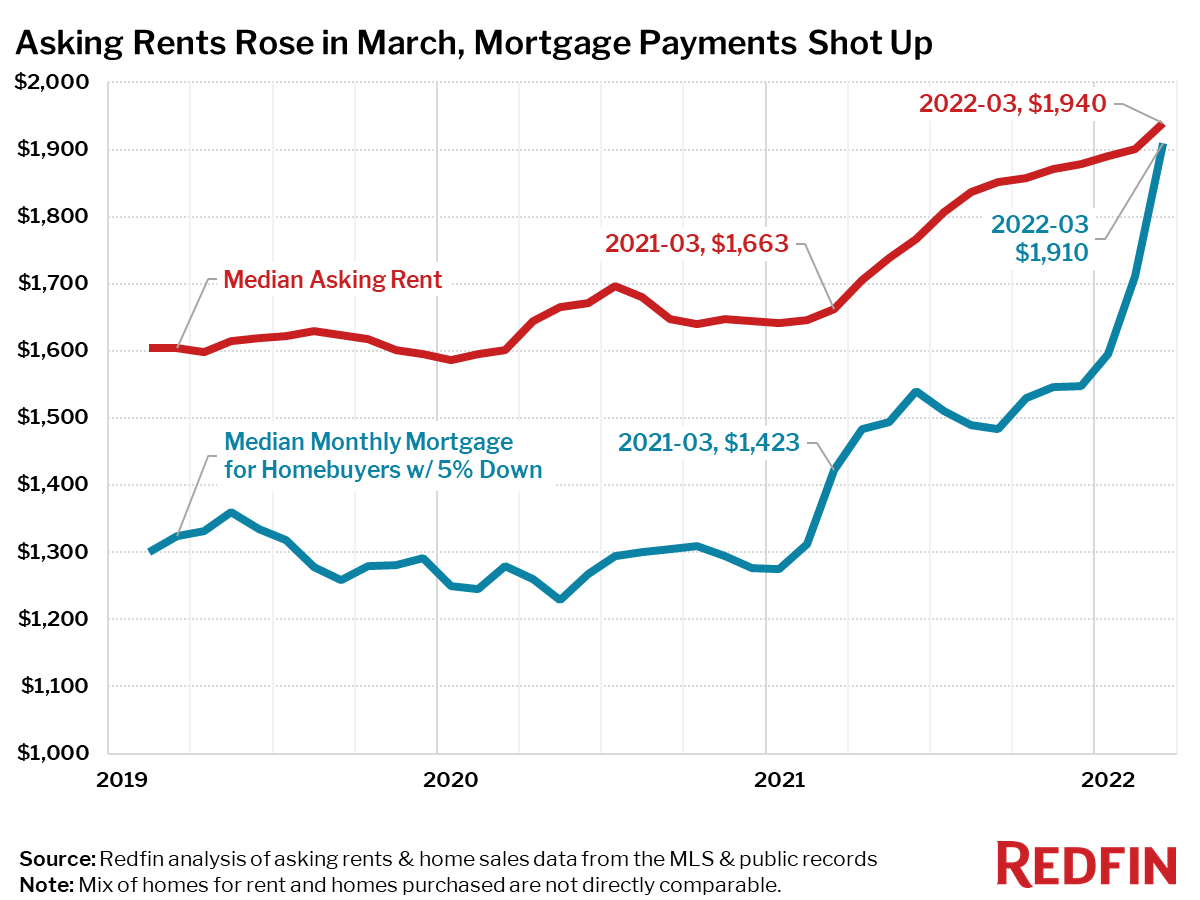The median monthly asking rent in the U.S. increased 17% year over year to a record high of $1,940 in March, the largest annual jump since at least February 2020 (Redfin’s rental data goes back through February 2019). Meanwhile, the national median monthly mortgage payment for homebuyers rose twice as fast: It climbed 34% year over year to $1,910, also the biggest increase in Redfin’s records.
The increase in monthly mortgage payments is largely because mortgage rates climbed from under 3% to 5% in just the past three months, pushing many potential buyers out of the for-sale market and increasing demand—and prices—for rentals. Even though homebuyer monthly payments are rising rapidly, asking rents were still slightly higher as of March—but the gap is closing quickly and is the smallest on record in Redfin’s rental data.
Although the home purchase market is showing early signs of a cooldown and price growth may slow in the coming months, Redfin economists do not currently expect sale prices or mortgage rates to drop.
“Many potential first-time homebuyers are quickly being priced out of the market by record-high home prices and fast-increasing mortgage rates,” said Redfin Chief Economist Daryl Fairweather. “They are then faced with two options: rent or move somewhere with a lower cost of living. Those who choose to rent may save money in expensive housing markets in the near term, but long term, they may have to deal with continued rent increases, year after year. Those who move and buy somewhere more affordable now will be paying considerably more than if they bought last year, but will be able to build equity in the long run and ensure relatively stable monthly housing costs going forward.”

Mortgage payment increases outpaced asking rent increases in 44 of the 50 largest U.S. metro areas in March.

Rent increases hit 40% year over year in Portland, OR, with Austin, TX not far behind at 38%. The Tri-State Area and many parts of Florida also saw rental increases of 30% or more.
Just two of the 50 most-populous metro areas saw rents fall in March from a year earlier. Rents declined 10% in Milwaukee and 1% in Kansas City, MO.
Note: Previous editions of this report incorrectly referred to the asking rent statistic as the average, when it was in fact the median.
Redfin’s rent-versus-own analysis uses data from more than 20,000 apartment buildings across the US. The report combines rental data on all sizes of apartments for rent with home sales data on all residential home sales (single-family, townhouse and condos) from public records and the multiple listing service (MLS). When this report refers to the median mortgage payment for new homebuyers, it is based on a 5% down payment, the median sale price during the month and the average mortgage interest rate for the month. The report uses a 5% down payment in order to be comparable to what an average renter may be able to reasonably achieve in savings.
Redfin analyzed home sales data from the MLS, and public records and rent prices from RentPath, across the 50 largest metro areas in the US. Monthly rental prices in this report are not directly comparable to monthly homebuyer mortgage payments, since the mix of homes available to rent and the mix of homes being purchased differ in location, size and quality of home within each metro area. For example, most of the homes being purchased may be in the less expensive suburbs of the metropolitan area, while the apartments being rented may be closer to the more expensive city core.
It is also important to note that the prices in this report reflect the current costs of new leases and new mortgages during each time period. In other words, the amount shown as the average rent is not the average of what all renters are paying, but the average cost of apartments that were available for new renters during the report month. Likewise, the median monthly mortgage payment shown is only for homes that sold during the report month, not for all homeowners.


